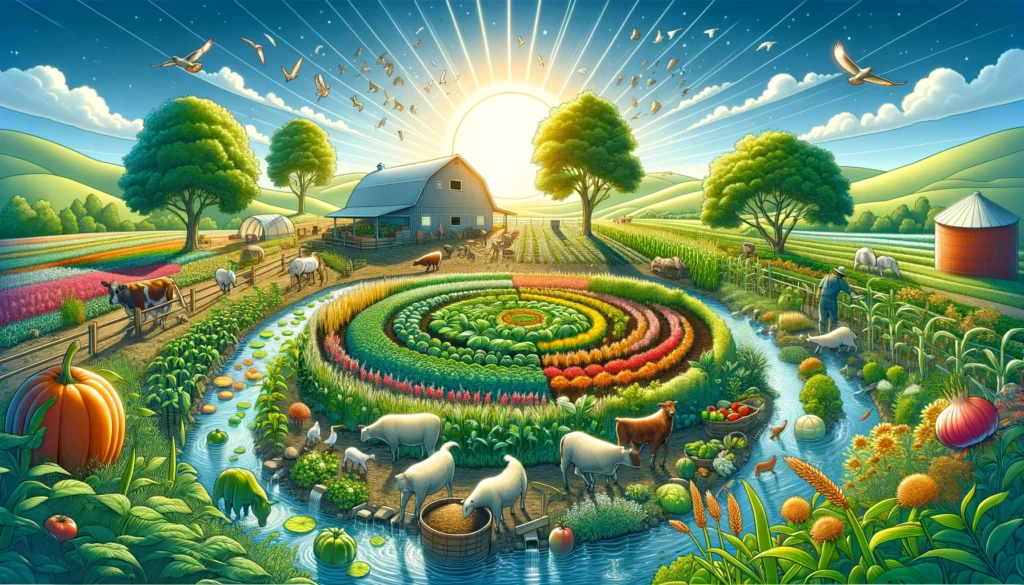In the modern quest for sustainability, regenerative agriculture emerges as a beacon of hope, promising to restore our planet’s health starting from the ground up—literally. This farming philosophy, rooted in principles that enhance ecosystem resilience, represents more than a method; it’s a movement towards a sustainable future. However, as we delve deeper into the intricacies of implementing regenerative practices on a global scale, the integration of artificial intelligence (AI) stands out as a pivotal element for its success. This article explores how AI can be crucial in amplifying the benefits of regenerative agriculture, steering us towards a greener, more sustainable future.
The Core of Regenerative Agriculture
Regenerative agriculture is a holistic approach focused on revitalizing soil health, increasing biodiversity, and restoring ecosystems. By prioritizing soil fertility, water management, and carbon sequestration, this method not only supports robust agricultural production but also addresses pressing environmental issues like climate change and water scarcity. The transition to regenerative practices, however, requires precise knowledge and adaptive management strategies—areas where AI shines.
AI: The Catalyst for Regenerative Success
AI’s role in regenerative agriculture can be viewed through several transformative lenses:
1. Precision Farming: AI technologies enable farmers to monitor and analyze vast amounts of data on soil health, moisture levels, and crop health in real time. This precision allows for the tailored application of water, nutrients, and interventions, reducing waste and enhancing the soil’s natural fertility.
2. Predictive Analytics: Through machine learning algorithms, AI can predict weather patterns, pest invasions, and crop yields with remarkable accuracy. This predictive capacity helps farmers make informed decisions that align with regenerative goals, such as diversifying crops in anticipation of climatic changes or optimizing planting and harvesting schedules.
3. Automated Regenerative Practices: AI-driven robots and drones can perform labor-intensive tasks such as planting cover crops, managing weeds without herbicides, and monitoring biodiversity. These technologies support the scalability of regenerative practices by reducing the labor and time required to manage large-scale operations.
4. Enhancing Biodiversity: AI tools can analyze ecological data to recommend crop rotations and polycultures that enhance underground biodiversity, crucial for soil regeneration. By understanding the complex interactions within ecosystems, AI can guide the creation of more resilient and productive agricultural landscapes.
5. Carbon Sequestration Monitoring: AI algorithms excel in analyzing satellite and aerial imagery to assess changes in land use and vegetation cover. This capability is vital for quantifying the carbon sequestration potential of regenerative agriculture, offering tangible evidence of its role in mitigating climate change.
The Future is Now
The integration of AI into regenerative agriculture practices is not a distant dream but a rapidly unfolding reality. Innovative farmers and researchers worldwide are already harnessing AI’s power to create more sustainable, productive, and resilient agricultural systems. As AI technologies become more accessible and tailored to the unique challenges of regenerative agriculture, their adoption is set to accelerate, bringing us closer to a sustainable future.
The journey towards a regenerative agricultural future is complex and multifaceted. It demands a paradigm shift in how we view and manage our agricultural systems. AI offers the tools and insights required to make this transition not only possible but also profitable and sustainable in the long term. By embracing AI, the agricultural community can unlock the full potential of regenerative practices, ensuring food security, environmental health, and economic viability for generations to come.
In conclusion, the symbiosis between AI and regenerative agriculture heralds a new era of farming that could significantly address many of the environmental challenges we face today. As we continue to innovate and integrate technology with traditional wisdom, the promise of a regenerated planet becomes increasingly tangible.


